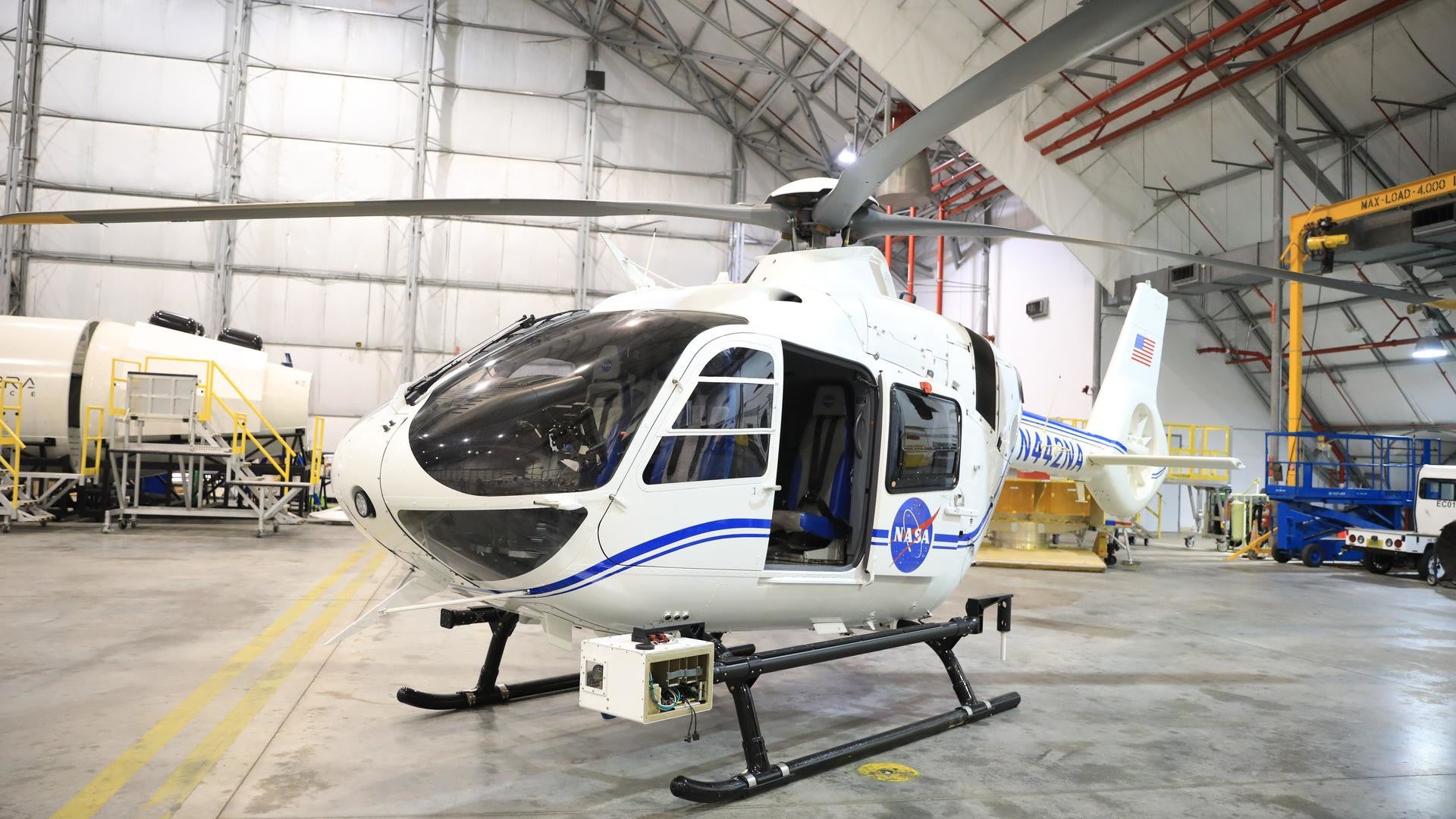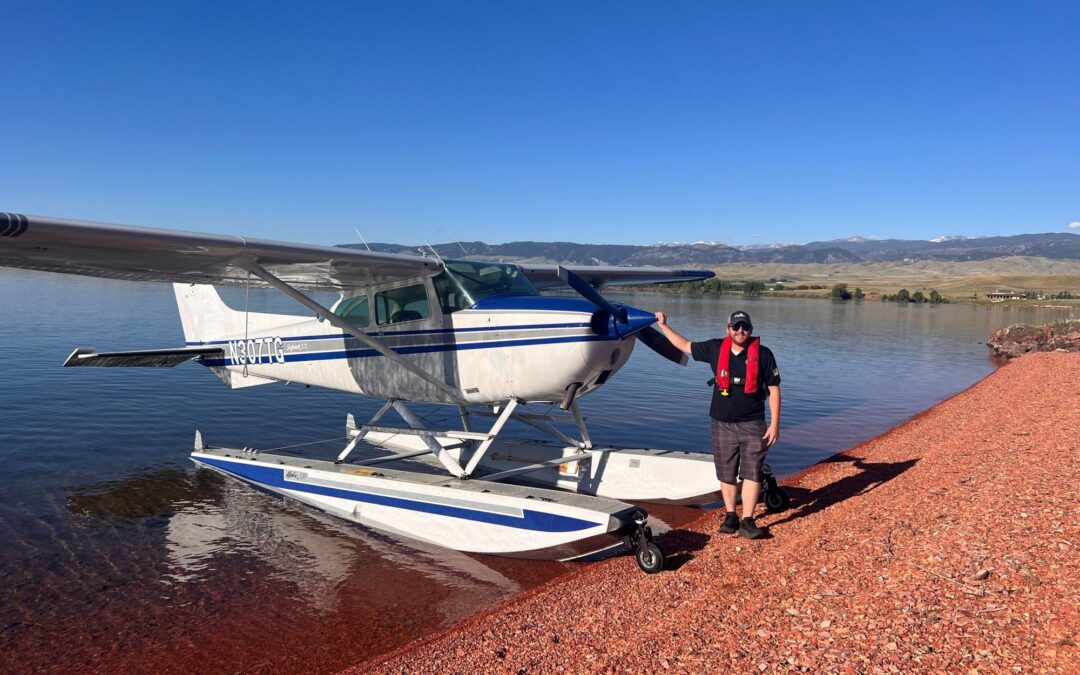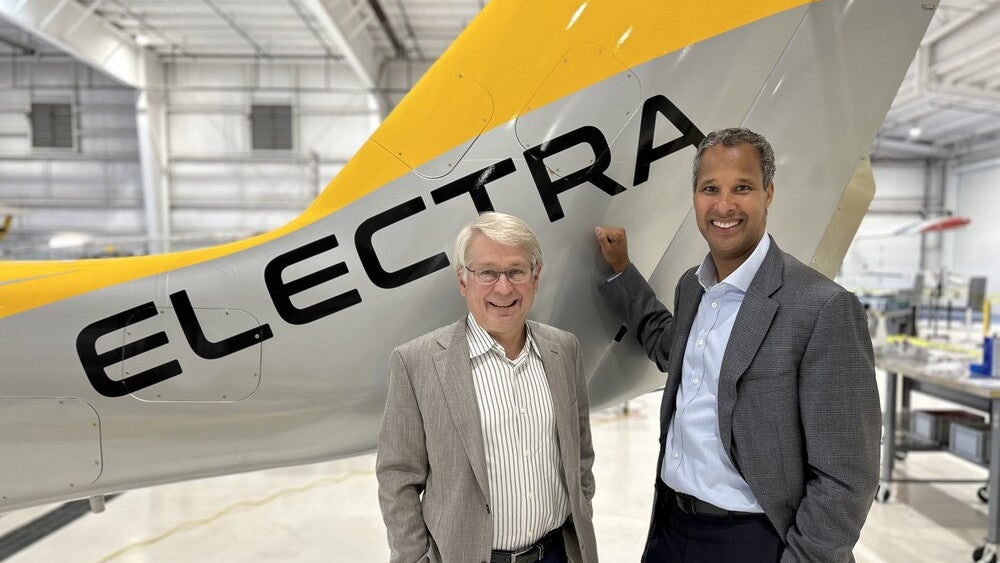Advanced air mobility (AAM) aircraft, including electric air taxis and drones, are beginning to hit the skies, and NASA has skin in the game.
The space agency on Monday introduced the Airborne Instrumentation for Real-world Video of Urban Environments, or AIRVUE—a specially designed pod that attaches to the bottom of a helicopter and can train AAM aircraft to “see” obstacles in their path. The technology is designed to hone computer vision systems for autonomous flight.
Agency researchers in April conducted initial AIRVUE testing at Kennedy Space Center in Cape Canaveral, Florida, attaching it to a piloted NASA helicopter to survey the environment.
“The computer algorithms that will enable the aircraft to sense the environment must be reliable and proven to work in many flight circumstances,” NASA said. “NASA data promises that fidelity, making this an important resource for industry.”
Developed and built at NASA’s Armstrong Flight Research Center in Edwards, California, the pod is equipped with cameras and sensors to collect visual information on weather and other hazards, compiling them into a massive dataset that will be shared with AAM manufacturers.
In the space agency’s view, data collected independently by manufacturers is seldom shared with competitors. That creates fragmentation in an industry the U.S. hopes to one day lead.
“Data is the fuel for machine learning,” said Nelson Brown, lead NASA researcher for the AIRVUE project. “We hope to inspire innovation by providing the computer vision community with realistic flight scenarios. Accessible datasets have been essential to advances in driver aids and self-driving cars, but so far, we haven’t seen open datasets like this in aviation.”
The space agency said it plans to develop more pods that integrate with other aircraft once it refines and evaluates the Airvue design.
This is not NASA’s first foray into self-flying systems. In 2022, for instance, it contracted autonomous flight developer Xwing, which in June was acquired by electric air taxi firm Joby Aviation, to design a safety management system for uncrewed flight.
Joby is just one of the manufacturers collaborating with NASA under its AAM mission, which seeks to give commercial firms the data they need to safely integrate air taxis, drones, and other vehicles within the national airspace.
Also working with the agency are Boeing self-flying air taxi subsidiary Wisk Aero and Archer Aviation, which last year agreed to make Wisk the sole provider of autonomy systems for its flagship Midnight air taxi. Joby and Archer’s aircraft will fly with a pilot at launch, but both anticipate a move to uncrewed flight in the future.
NASA’s research with these companies has spanned everything from turbulence and noise to battery safety and simulated operations around busy U.S. airports. The space agency has also operated self-flying drones to further study automated AAM operations.
Drones operations are on the agenda too. This month, for example, NASA gathered representatives from the drone industry, police and fire departments, and FAA to help the regulator develop a rule for operations beyond the visual line of sight (BVLOS) of the pilot.
In lieu of a final BVLOS regulation, the FAA awards these permissions via waiver. Lifting BVLOS restrictions is expected to greatly expand the service area for drone delivery by allowing operators to essentially manage their own airspace—with FAA supervision, of course.
Like this story? We think you’ll also like the Future of FLYING newsletter sent every Thursday afternoon. Sign up now.
The post NASA Pod Helps Self-Flying Aircraft ‘See’ Surroundings appeared first on FLYING Magazine.




